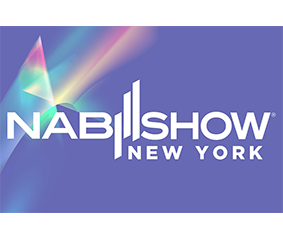What exactly is virtual, and what is real?
When it comes to broadcast technology, what exactly is “virtual” these days… and what is real? That depends a lot on who you ask, and what you’re trying to do… at ENCO, we’ve got a few very real perspectives on what it means to be virtual.
ENCO has been building virtualized products since 2012 -- starting with our ENCO1 fault tolerant virtualized server platform. Over the last decade, the world has seen massive increases in virtualized server infrastructures, where 5, 10 - even 50 or more operating system instances can all be running on the same server, offering massively scalable opportunities with redundancy built-in, and massive cost-efficiency.
Today more than ever, this is a thrust among radio and television broadcasters worldwide, regardless of their size - and with mass migrations to Cloud broadcasting and IP signal transport, this will only continue to grow.
Many Meanings
The word “virtual” can be used to define a whole lot more than running numerous operating system instances on a single “bare metal” hardware server running your preferred version of hypervisor. Today ENCO offers products that can be described as “virtual” because they either extend broadcast technical capabilities beyond localized hardware & software into distant locations, or because they allow for user control from non-traditional interface methods, or because they entirely do away with traditional hardware requirements, while simultaneously enabling even greater flexibility and capabilities.
To the latter point, ENCO today has customers operating entirely “in the Cloud”, using our DAD automation running on virtual-instances hosted by 3rd party Cloud providers (Amazon AWS, Microsoft Azure, etc.), where all of the station’s automation and content lives. They access their Cloud-hosted DAD system via our award-winning WebDAD Web browser-based product, which provides them native IP-linked control of DAD from anywhere on the Internet, via secure VPN and a simple HTML5-compliant Web client. At that point, some broadcasters remain fully in the Cloud for streaming-only stations, where others can easily feed their transmitter via some IP audio link (over the public Internet, or a private link).
Of course when talking about infrastructure, finances are always a factor. Traditional dedicated servers at the station are typically capital expenditures, which can be depreciated over many years. When you off-site your hosting, your libraries, playout, mixing, etc, can become recurring expenses - and specifically an OpEx model, which may be more advantageous for some.
Another great benefit from hosting your systems in a 3rd party Cloud-service hypervisor is that it’s “burstable” - meaning with the right system architecture, you can temporarily scale-up (or “spin-up”, as the IT folks say) additional instances to host added capacity your station may need for special events, news coverage, seasonal programming or remotes, that you then pay for as an expense, and only while you were using it. Once the event is over, you spin back down those extra resources, and stop paying for them. That affords a whole lot of flexibility!
Whatsmore, you don’t need to be running anything in the Cloud to benefit from WebDAD’s native HTML5 control, and it is operating system-agnostic, so you can run WebDAD on Windows, a Mac, even Linux.. Many broadcasters are entirely hosted the traditional way, with their playout servers housed on-site at their studios, and use WebDAD both as an in-house / on-prem additional control method, and from off-site locations (like while at a remote, or at home).
"Revelation"
One example is Public Radio 90 WNMU-FM in Marquette, Michigan. Kurt Hauswirth (Host/Producer of Classiclectic, Peninsula Performances & The Shuffle) uses WebDAD on a daily basis, with seamless access to their on-air and production DAD systems whether he’s at home connected via VPN, or at the station. He uses it to look forward & back in his playlists, modify cuts, and upload and download across different libraries across his morning and weekend shows. Crucially for Public Radio broadcasters, he can also quickly search and refer to cuts from sponsor messages & underwriting, as well as promotional material or music from whatever genre he needs to search by. He can even time-out a program and cut voice tracks (all via Web browser, regardless of OS), and in the event of emergencies, he also has instant access to Presenter to take control on-air if needed. Perhaps the best part is, he can do this from anywhere - even from his local Starbucks - he doesn’t have to be in front of a valuable production or on-air console, which Kurt says “has been a revelation as to how radio can be done.”
"ENCO is seeing a strong migration of three-letter national and global networks making the shift to a virtualized back end."
Total backup
Another twist on virtualization is for DR (Disaster Recovery) purposes. ENCO’s DAD-DR platform serves the best of both worlds, by both supporting the on-site DAD automation & playout you normally see at the station, and running a Cloud-based instance of each DAD system, and linking them via secure VPN. What this affords is multiple locations where all your content is stored (libraries, playlists, as-runs, etc), a synchronization mechanism to keep both locations up-to-date, and an IP path from the Cloud to the transmitter for backup. In the event of a crisis at the station, all you need to do is cutover the transmitter feed to your Cloud instance (whether that’s on some Public Internet Cloud, or even based at your transmitter as some broadcasters like to do).
Globally agile
Now back to virtualization & hypervisors: ENCO’s seeing a strong migration of 3-letter national and global networks making the shift to a virtualized back end, and with many running our DADtv and Hotshot audio playout systems on these highly-scalable, robust virtualized servers. These largest-of-scale networks see many advantages by converting to virtualized servers, including having a centralized back-end in a single (or a few) locations that are easier to manage and protect, while at the same time reducing the amount and complexity of workstations installed throughout their facilities, cut down on hardware costs, and vastly improve their workflow flexibilities.
For example, now by using simple “thin client” workstations connected via IP to the back-end, via powerful user rights management controls it’s possible for a user to log-in to just any workstation and via just their username, all the resources and content allocated to them or their project can be automatically transferred seamlessly to where they are located. The user experience is the same for the user, whether down the hall or in another country and linked over VPN, or in PCR “A”, “B” or “C”.. This combination of virtualization combines both the hypervisor-based massively-scaled OS instance hosting, and the routing of IP audio & metadata across various edge devices and computer-based processing, mixing, playout and storage servers.
Only with a fully virtualized backend is this kind of globally-agile flexibility and redundancy possible.
Do note, you can run virtualized server clusters in a number of places, from your own on-site data center, to a local data center near your facilities, or perhaps at your transmitter for backup purposes (if you have a transmitter) -- these may all be referred to as “Local Cloud”. Alternatively of course you can use a national private or public Cloud (such as Amazon Web Services, Microsoft Azure, Iron Mountain, Google Cloud, SunGard, etc.). Both private and public Internet links are more available than ever, between metropolitan regions and entire countries - making it easier to link all of your data and applications with bandwidth to spare.
Smaller local stations also can benefit from hypervisor virtualization, for many of the same reasons - smaller hardware costs, lower utility costs, added redundancy among the virtual machines, and centralization. Perhaps in some ways, hypervisor virtualization is even more impactful in smaller markets - where they’re not as concerned about global production environments, but need to keep costs low while staying on the air as reliably as possible.
Another form of virtualization is on the software side, via what are known as “microservices” and “containerization”.
"Perhaps the best part is that Kurt can do all this from anywhere, even from his local Starbucks. He doesn't have to be in front of a production or on-air console."
This modern trend allows for software to be much more modular in design, able to run on different OS platforms easily, and scale-up smoothly when more demand is needed. Then there’s the recent growth of open API’s (Application Programming Interface) - a development method whereby one application can be easily linked to another, to create a more unified (or virtualized?) experience -- even across different manufacturers -- we’re talking more seamless forms of integration, control, file transfer, audio flows, and so forth.
ENCO’s excited about how containerization can make our products more flexible to enable more resilient, dynamic and scalable applications that are more responsive to a customer's changing needs over time, and how the growth of open API’s make it easier for different applications to interact with each other. In the end, this all means greater options for the customer, tailored to their bespoke needs.








